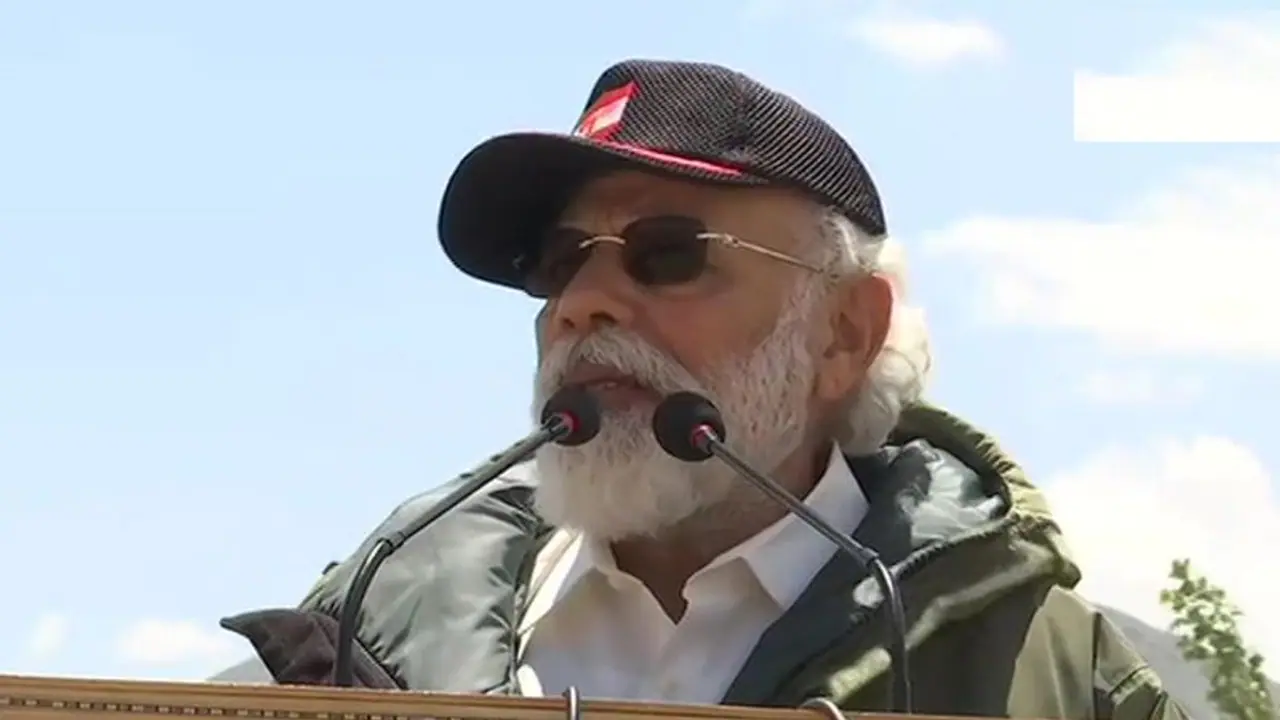Here’s the hidden story on the Indian offensive to reclaim territory seized by the Chinese
Bengaluru: It was in June that that the Galwan clashes took place in which 20 Indian soldiers were martyred.
Prime Minister Narendra Modi paid a visit to Leh after the clashes. It was a surprise visit.
As the Generals apprised him of how the Chinese had attacked us and what intend to do next, he is reported to have said, “I am not interested in what the Chinese have done and what they will do, I am interested in what you have done and what you will do.”
Later, he addressed the freshly inducted troops of 17 Corps acclimatizing at Nimu.
His words carried a lot of meaning: “A brave-heart protects the motherland with the power of his weapons. This land is for the brave. Our support, strength and resolve for its defence and security are as high as the Himalayas. I can see this ability and resolve in your eyes right now. It is clearly visible on your faces. You are the heroes of the same land that has repulsed the attacks and atrocities of many invaders for thousands of years. This is our identity. We are the people who worship Lord Krishna who plays the flute. We are also the same people who follow Sudarshan Chakradhari Krishna as an ideal. With this inspiration, India has emerged stronger after every attack.”
Col Danvir Singh (R), an Associate Editor with Indian Defence Review, has penned an article “Indian offensive to retake Chinese seized territory: The hidden story”.
We reproduce a part of the article here:
Offensive Plans
In early August, this newly inducted Mountain Division was fully acclimatized. They had started to carry out reconnaissance and validate their offensive plans. These plans were so secret that even the holding formation troops were unaware of what was going on. Options were carefully drawn and diligently vetted.
By 24 August, one plan was finally given the go ahead. Simultaneously, the Chief of Defence Staff, General Bipin Rawat also cautioned the nation to stay prepared for any eventuality, even if that meant war.
At ground zero, the company commanders and platoon commanders of this elite mountain division had by now selected their routes of infiltration, identified tactical heights to be occupied and timed their paces for speedy retaking.
From the word go, the final phase of the retaking was planned to be completed in 120 minutes flat. Artillery was put in place, ready to support the infiltrating troops should the need arise. Armoured elements were well poised, ready to out-manoeuvre and destroy any PLA attempt, if they thrust into the Chushul valley. Air defence troops were also deployed with shoulder fired anti-aircraft Igla missiles, networked and coordinated to shoot down any Chinese aircraft interfering with our advancing troops.
The Chinese on their side had their mechanized Combat Team located in Spangur near Moldo. They had 33-ton T15 light tanks designed to fight a battle in this high-altitude region.
Geared for action
The Indian troops were fully geared for action, all ends tied, contingencies catered for and rehearsed. We were ready to strike. The objective was Spangur Bowl, an area south of Pangong and east of Chushul.
The features dominating the Spangur gap provided great tactical dominance and huge strategic advantages. Black Top, Helmet, Magar and Gurung Hills stretching right up to Rezang La were these features. Under the cover of darkness, Indian infiltrating troops moved up to the LAC, established their release points and waited for the green signal. Some troops mounted on high mobility vehicles and drove straight up to the objective—the 3 km ridgeline on the hill alongside Requin.
At the word go, these troops crossed over into the enemy claimed territory with lightning speed. The mountain division of Tibetan troops of the Special Frontier Force occupied the hill features, beating their own planned timings well under 120 minutes.
Before the break of dawn, one complete infantry brigade with over 2,000 troops was holding the heights overlooking the Spangur Bowl. Armed with French Milan anti-tank missiles and Carl Gustav rocket launchers, the Indians had literally rendered the Chinese armoured tanks at Moldo redundant and out manoeuvred. On 31August, the garrison at Moldo was virtually under siege.
Surprised and shocked, the Chinese mustered their club wielding troops and advanced towards the positions now held by the Indians. More shock was in wait. The Indians troops warned the advancing troops, but the PLA men continued with their advance. The Indians had to fire a few warning shots in the air, and this brought in new realities to the fore. The Chinese, on seeing the aggressive posture, fled, only to return a little later.
This time they came with their armoured personnel carriers, driving on their cemented road from Moldo to Rezang La. But this advance also came to a halt and was followed by a hasty retreat. The Indian troops were at a stone’s throw from the Moldo garrison, dominating each and every move of the PLA. The sight of anti-tank missiles and rocket launchers had deterred the move of the Chinese armoured personnel carrier and halted them in their tracks.
The Chinese had realised by now that they were not only outnumbered but totally out-flanked, making their position untenable. Any armed clash hereafter would prove suicidal. The annihilation of Moldo garrison was assured for the Chinese had clashes erupted. The Indians by now were firmly dug in.
The way of doing business on the borders with China has undergone a paradigm shift. In the past five decades this was the first ever offensive operation carried out against the Chinese. The initiative is now with India; the shoe is on the other foot. Having enhanced India’s negotiating power manifold, the unthinkable so far is now a new reality.
